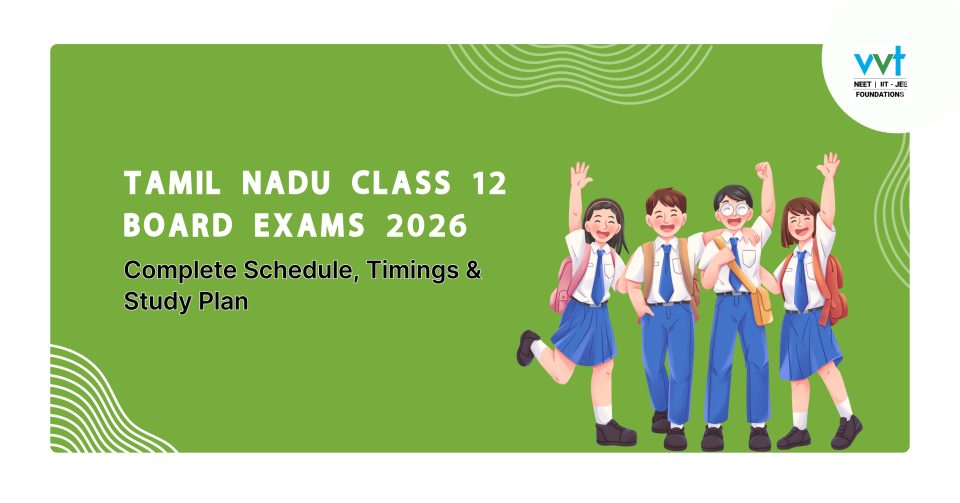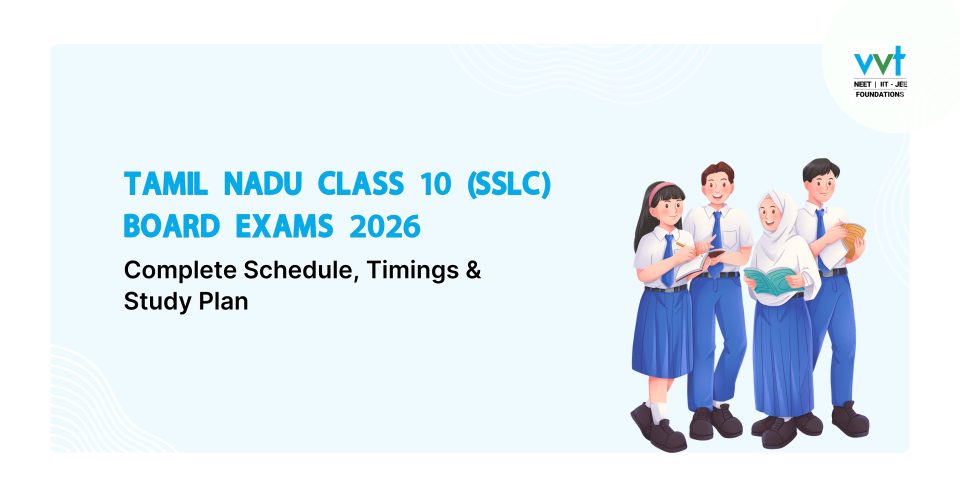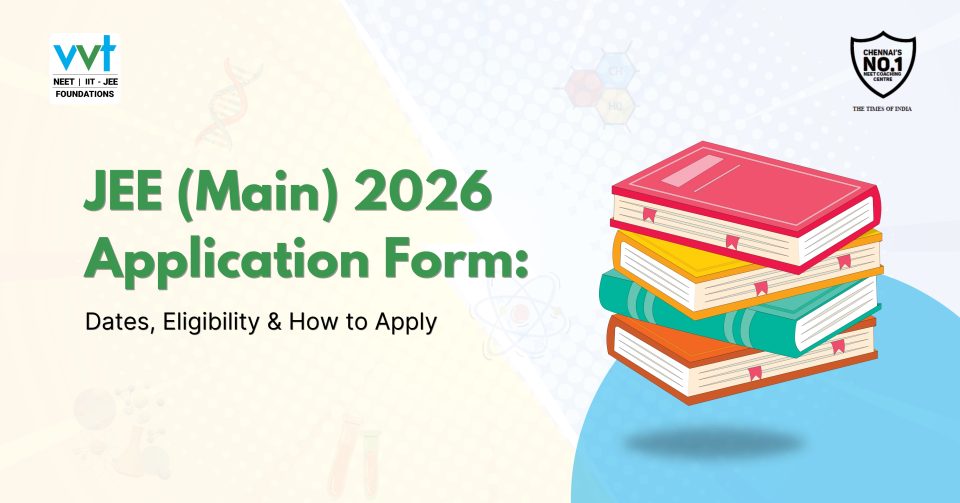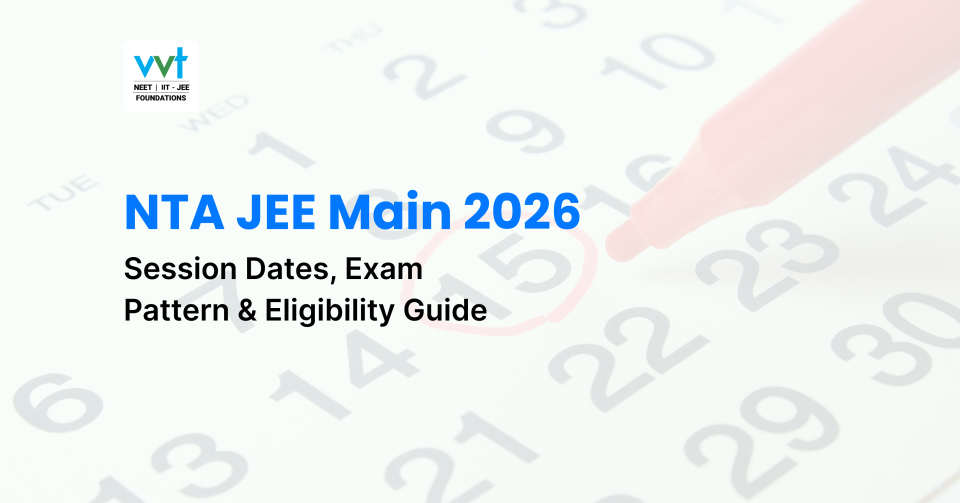
Top Paramedical Courses After 12th Without NEET for High-Paying Jobs
June 16, 2025
NEET Result 2025 Out: Download Scorecard and Check Cut Off
June 18, 2025Understanding NEET 2025 Tie-Breaking Criteria: The New Random Process by NTA Explained
VVT Coaching Chennai – Ranked #1 Best NEET Coaching Centre by Times Now!
Preparing for the National Eligibility cum Entrance Test (NEET) 2025 is a significant milestone for aspiring medical students in India. With lakhs of candidates competing for limited seats, it’s not uncommon for multiple students to achieve the same score. This raises a critical question: how does the National Testing Agency (NTA) decide who gets a higher rank? For NEET 2025, NTA has introduced updated tie-breaking criteria, including a new random process guided by an independent expert committee.
At VVT Coaching, we understand that staying informed about these changes is vital for your preparation. In this article, we’ll break down the NEET 2025 tie-breaking criteria step by step, helping you focus on what matters most—your success.
What Are Tie-Breaking Criteria in NEET?
In competitive exams like NEET, where thousands of students participate, identical scores are common. Tie-breaking criteria are rules used to assign unique ranks to candidates with the same marks or percentile scores. This process ensures fairness and transparency during the counseling and admission process for medical colleges across India. Without these criteria, it would be challenging to determine who gets priority for limited seats.
How Were Ties Broken in Previous Years?
In previous NEET exams, ties were resolved using a structured approach:
- Subject Scores: Higher marks in Biology (Botany + Zoology), followed by Chemistry, then Physics.
- Accuracy: The ratio of incorrect to correct answers across all subjects.
- Other Factors: In rare cases, factors like the candidate’s application number or age were considered.
However, for NEET 2025, NTA has revised these rules, removing application numbers and age as tie-breakers and introducing a new method to ensure fairness.
NEET 2025 Tie-Breaking Criteria
The NTA has outlined a seven-step process for resolving ties in NEET 2025, with an additional random process as the final step. Below is a detailed breakdown of the criteria:
| Step | Criterion |
| 1 | Higher marks/percentile in Biology (Botany & Zoology) |
| 2 | Higher marks/percentile in Chemistry |
| 3 | Higher marks/percentile in Physics |
| 4 | Lower proportion of incorrect to correct responses in all subjects |
| 5 | Lower proportion of incorrect to correct responses in Biology |
| 6 | Lower proportion of incorrect to correct responses in Chemistry |
| 7 | Lower proportion of incorrect to correct responses in Physics |
| 8 | Random process guided by an independent expert committee |
Step-by-Step Explanation
- Biology (Botany & Zoology): Candidates with higher marks or percentile scores in Biology are ranked higher. Since Biology carries significant weight in NEET, excelling in this subject is crucial.
- Chemistry: If the tie persists, the candidate with higher marks in Chemistry takes precedence.
- Physics: Next, higher marks in Physics are considered.
- Overall Accuracy: The candidate with a lower proportion of incorrect to correct answers across all subjects is ranked higher.
- Biology Accuracy: If the tie remains, accuracy in Biology is compared.
- Chemistry Accuracy: The process continues with accuracy in Chemistry.
- Physics Accuracy: Finally, accuracy in Physics is evaluated.
- Random Process: If all steps fail to break the tie, a random process, guided by an independent expert committee, determines the final ranking.
The New Random Process
The introduction of a random process is a significant change for NEET 2025. This step is only used when all seven criteria fail to resolve a tie, which is expected to be rare given the detailed nature of the process. The random process is overseen by an independent expert committee to ensure fairness and transparency.
While the exact mechanics of the random process are not detailed in the NTA’s information brochure, students can trust that it is designed to maintain impartiality. This change reflects NTA’s commitment to eliminating arbitrary factors like application numbers or age, ensuring rankings are based on merit and fairness.
Why Did NTA Introduce This Change?
The shift to a random process, guided by experts, aims to enhance fairness in the ranking process. In previous years, using application numbers or age as tie-breakers was seen as arbitrary, as these factors are unrelated to a candidate’s academic performance. By introducing a random process as a last resort, NTA ensures that unresolved ties are handled transparently under expert supervision. This change aligns with the agency’s goal of maintaining trust in the NEET examination process, especially given the high stakes for medical admissions.
Implications for NEET 2025 Aspirants
Understanding the tie-breaking criteria can help you strategize your preparation:
- Prioritize Biology: Since Biology is the first tie-breaker, ensure you have a strong command of Botany and Zoology.
- Focus on Accuracy: The ratio of incorrect to correct answers is a key factor. Practice solving questions accurately to minimize errors.
- Strengthen All Subjects: High scores in Chemistry and Physics can give you an edge if ties occur.
- Don’t Stress About Ties: Ties are relatively rare, so focus on maximizing your overall score rather than worrying about tie-breaking scenarios.
At VVT Coaching, our expert faculty can help you master these subjects with personalized study plans and mock tests designed to boost accuracy and confidence.
Conclusion
The NEET 2025 tie-breaking criteria, with the new random process, ensure a fair and transparent ranking system for all candidates. By understanding these rules, you can tailor your preparation to focus on key subjects and accuracy.
At VVT Coaching, we’re committed to helping you achieve your medical dreams with expert guidance, mock tests, and personalized strategies. Don’t let the fear of ties hold you back—focus on your preparation, and let us support you every step of the way.
Frequently Asked Questions (FAQs)
Below are answers to common questions about the NEET 2025 tie-breaking criteria:
- What is the new tie-breaking criterion for NEET 2025?
If all seven criteria fail to resolve a tie, NTA will use a random process guided by an independent expert committee to assign ranks. - Why did NTA introduce the random process?
The random process ensures fairness when all other merit-based criteria are exhausted, replacing arbitrary factors like application numbers or age. - Will my application number or age be used in tie-breaking?
No, for NEET 2025, application numbers and age are no longer part of the tie-breaking criteria. - How can I prepare knowing these tie-breaking rules?
Focus on scoring high in Biology, Chemistry, and Physics, and practice accuracy to reduce incorrect answers. Enroll with VVT Coaching for expert guidance. - Is the random process fair?
Yes, it is overseen by an independent expert committee to ensure transparency and impartiality. - How often are ties likely to occur in NEET 2025?
With lakhs of candidates, ties are possible but rare. The detailed seven-step process minimizes the need for the random process. - Can VVT Coaching help me improve my NEET score?
Absolutely! Our experienced faculty and comprehensive resources at VVT Coaching are designed to help you excel in NEET 2025.











